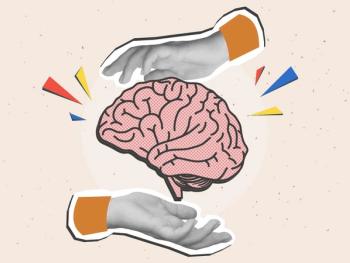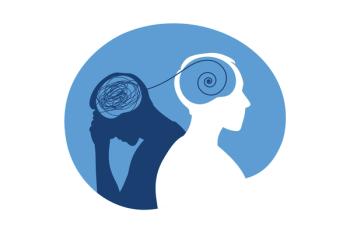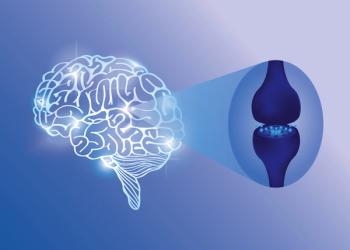
Cyclothymia, the Quintessential Mood Temperament: Ignored or Forgotten? Part III: Differentiating Cyclothymia and BPD and Treatment Considerations
In Part III of this series, an expert discusses the key differences between cyclothymia and borderline personality disorder, along with treatment considerations for cyclothymia.
This may be one of the more contentious issues since psychoanalytically derived personality disorders have retained such a prominent place in American psychiatry for several generations, whereas mood temperaments have not.
Ironically, mood temperaments were well delineated in late 19th-century European psychiatry and conceived within a medical model by Kahlbaum, Kraepelin, and Kretchmer before Freudian ideas took hold. The work of prominent researchers Hagop Akiskal and Nassir Ghaemi, along with others, can help us carefully differentiate between cyclothymia and borderline personality disorder (BPD).
For an excellent review of the historical relationship between cyclothymia within the larger context of classically defined manic-depressive illness and its differentiation from BPD, see Akiskal, et al.Their major findings are summarized in
Further differentiation is provided by Perugi, et al2:
“According to the logistic regression, the presence of cyclothymic attributes explains most, but not all, of the relationship between atypical depression and BPD, including avoidance of abandonment, unstable relationships, identity disturbance, impulsivity, self-injurious behavior, affective irritability, and reactivity… We submit that cyclothymic disposition might represent the mediating core characteristic in this complex pattern of mood, anxiety, and impulsive disorders. Anxious-sensitive symptomatology and hostile-impulsive-addictive behavior, rather than being considered independent comorbidities, might represent core features of such cyclothymic diathesis, largely pinpointed by a common familial trait.”
Ghaemi3 and others4-7 propose that of the 9 DSM criteria for BPD, only 2 have modern empirical validation: numbers 5 and 9. Numbers 3 and 7 are directly based in Freudian theory, and numbers 2, 4, 6, and 8 overlap with the bipolar spectrum (
Pre-DSM-III, trauma was considered the raison d'être by psychoanalysts as a cause of BPD. But to be atheoretical, it was left out of DSM-III, leading to an overdiagnosis of BPD with mostly non-specific criteria. The “soft” psychotic symptoms of criterion number 9 were originally observed by psychoanalysts when their patients were undergoing the stress of psychoanalysis on the couch but not necessarily in their lives.
Consistent with Ghaemi’s formulation, according to Akiskal,9 “Contemporary research suggests that many ‘borderline’ patients represent a severe labile-irritable variant of cyclothymia on the border of manic-depressive illness. However, bizarre episodes of self-harm, recurrent illusions, and [posttraumatic stress disorder] (PTSD)-type dissociative symptoms are uncharacteristic of cyclothymia and suggest a separate process.”
Treatment for Cyclothymia
Although there are no official guidelines or algorithms, we can learn from Perugia and Hantouche, who are experienced clinicians in this area (
“Possible consequences of incautious use of antidepressants in cyclothymia range from the increase of highs and lows amplitude and frequency of cycling, induction of chronic treatment-resistant mixed-depressive states, and increase of suicidal risk. Finally, as cyclothymia may be a harbinger of full-blown bipolarity, antidepressants might be responsible for the onset of severe manic or mixed episodes in certain individuals.”
The cognitive-behavioral approach is also systematically used in the treatment of cyclothymia. Specific strategies and principal objectives are selected based upon the individual patient’s needs
Concluding Thoughts
Regarding the cyclothymic “disorder” in DSM-5, Ghaemi states12:
“We should teach clinicians what they don’t understand, rather than codify their lack of understanding in a new misunderstanding of such a key concept to daily psychiatric practice as cyclothymia. Cyclothymia and its cousin hyperthymia are key to understanding and diagnosing all mood illnesses.Not only are those mood temperaments legitimate, but they deserve much more attention than they are receiving.”
The aforementioned studies indicate the importance of recognizing cyclothymia as a primary consideration along with other mood disorders in a diagnostic hierarchy for children, adolescents, and adults. Consideration of diagnostic validators such as course, age of onset and episodicity, and family history can help avoid the mistake of false comorbidity with lower-tier conditions such as personality disorders, attention-deficit/hyperactivity disorder (ADHD), etc, so as to receive proper treatment with low-dose mood stabilizers and psychotherapy rather than antidepressants and/or stimulants.
In 1898, Ewald Hecker13 reported that, in his experience, the majority of individuals with cyclothymia were treated on an outpatient basis but occasionally in an asylum if needed. He recommended that, “In the excited state, the aim is to prevent an increase of excitation by the following means: providing a calm and peaceful environment without embarrassing constraints, limiting stimulation of the patient, and constant and friendly care.”
Hecker also recommended explaining the variabilities of cyclothymia to patients when they were in the depressive state (the most common presentation), which is when talking therapy can be more effective.13 This is still good advice more than a century later.
Dr Yost provides psychiatric consultations through telemedicine in Tucson, Arizona.
References
1. Akiskal HS, Hantouche EG, Allilaire JF.
2. Perugi G, Fornaro M, Akiskal HS.
3. Ghaemi SN, Dalley S, Catania C, Barroilhet S.
4. Vöhringer PA, Barroilhet SA, Alvear K, et al.
5. Zanarini MC (Ed).
6. Paris J.
7. Fossati A, Barratt ES, Carretta I, et al.
8.
9. Akiskal HS.
10. Perugi G, Hantouche E, Vannucchi G.
11. Hantouche E, Perugi G. Should cyclothymia be considered as a specific and distinct bipolar disorder? Neuropsychiatry. 2012;2(5):407-414.
12. Gin S Malhi: a critical analysis of concepts in psychiatry. Gin Malhi and Erica Bell: fake news: Cyclothymia—a dithering disorder? International Network for the History of Neuropsychopharmacology. March 12, 2020. Accessed April 15, 2023. chrome-extension://efaidnbmnnnibpcajpcglclefindmkaj/https://inhn.org/fileadmin/user_upload/User_Uploads/INHN/Controversies/MALHI_Cyclothymia.pdf
13. Baethge C, Salvatore P, Baldessarini RJ.
Newsletter
Receive trusted psychiatric news, expert analysis, and clinical insights — subscribe today to support your practice and your patients.















